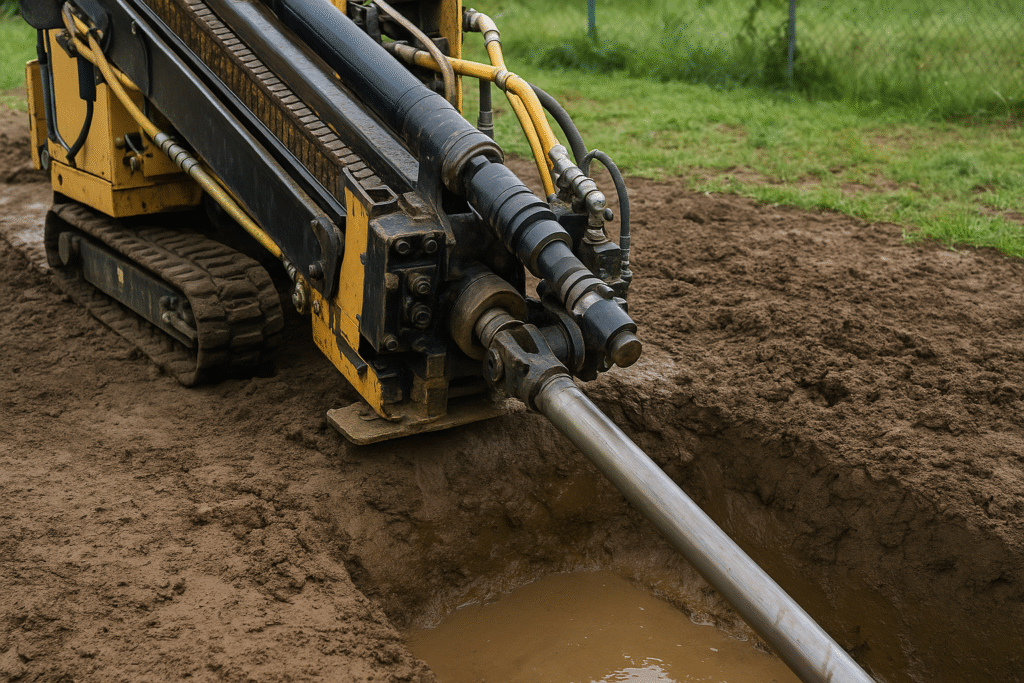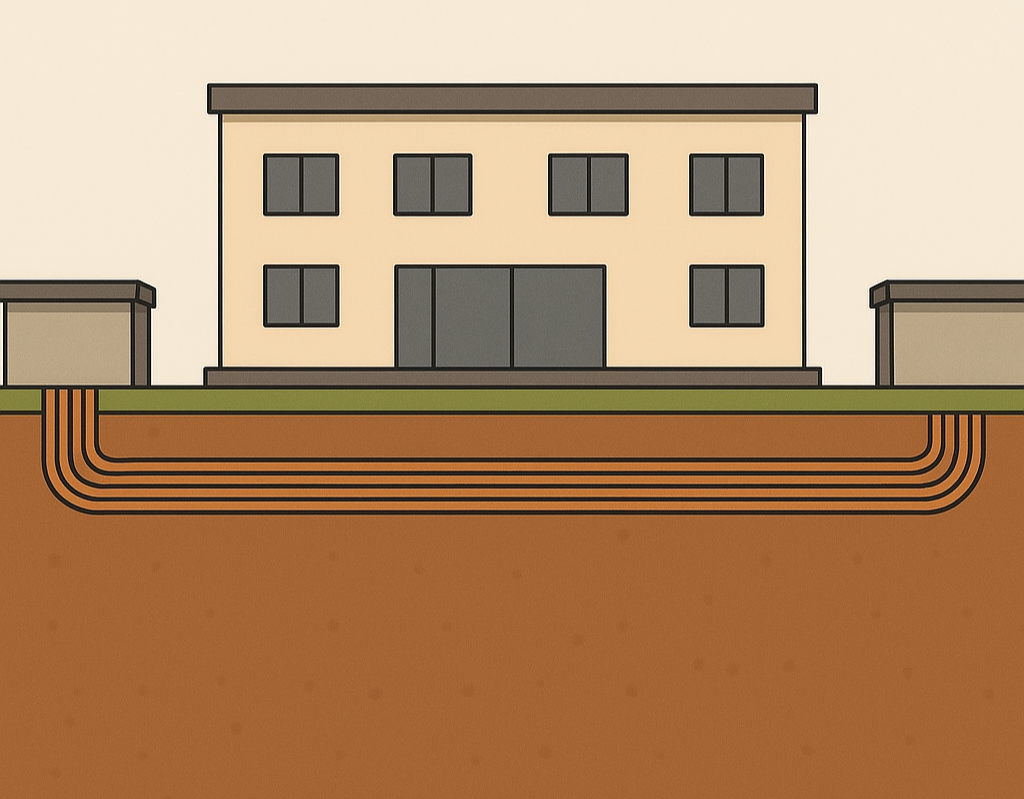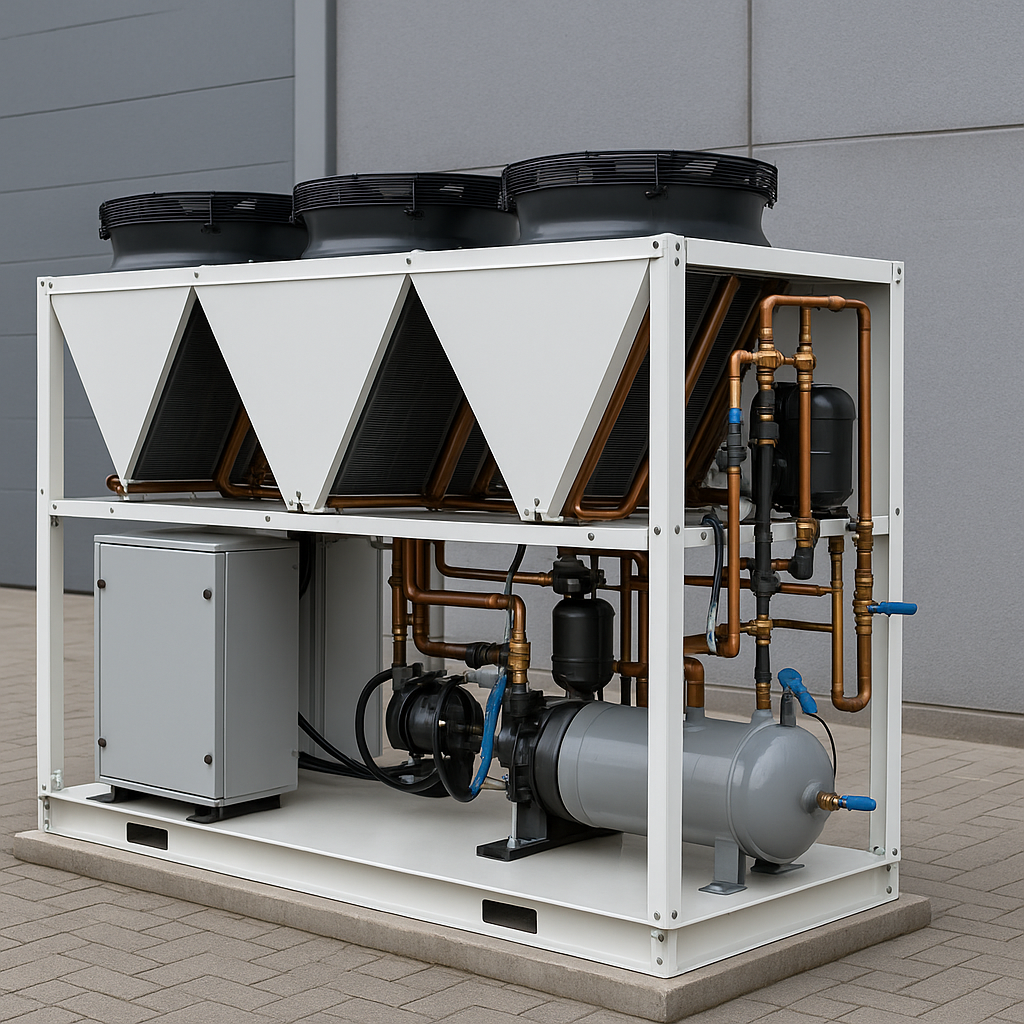Clay Heat Recovery System
CHRS Energy uses horizontal directional drilling (HDD)to install modular PEX/HDPE closed-loop systems at depths of 5 – 26m and lengths of 200 – 800m under clay-rich land.
Clay is a natural thermal battery. CHRS captures this stored heat to deliver 0.7 – 4 GWh/yr per stack of thermal energy, which can be added to per 2m stack spacing. Scalable for heating and cooling of:
- Homes and Estates
- Airports and Rail Networks
- Councils, NHS and urban districts
- Industrial and agricultural sites


How Does CHRS Work?
- Drill & Install modular pipe loops under clay-rich land using trenchless HDD.
- Heat pumps extract thermal energy from clay year-round for heating using closed-loop Bio-based Propylene Glycol.
- Optionally run chilled Glycol to remove excess clay heat during heatwaves and can be employed in underground tunnels.
- CHRS can support a 4 km hot water and heating ring main, thereby fully deployable within towns and villages.
- The system is monitored and scalable, expanding in stacks as needed. Fully advanced to isolate loops to maintain thermal integrity.
- Energy produced offsets fossil fuel dependency and grid heating loads, and truly meet Net-Zero Targets.
CHRS Optional Cooling
Beyond heat extraction, CHRS can be configured to operate in cooling mode, circulating cooled glycol through the closed-loop pipes within the clay bed to actively reduce underground temperatures. In dense urban environments, heat islands, or critical infrastructure zones like underground train networks, this function helps dissipate excess heat directly within the ground, offering a more effective and sustainable alternative to air cooling.
CHRS doesn’t just extract heat, it can actively manage it, protecting infrastructure and improving urban resilience during heatwaves.

- Councils and Housing: Decarbonise large housing estates.
- NHS & Healthcare Estates: Cut heating bills and carbon footprint sustainability.
- Airports & Rail: Heat or cool infrastructure, manage runway and underground tunnel temperatures.
- Industry & Agriculture: Heat greenhouses, dry biomass, or reduce heating costs.